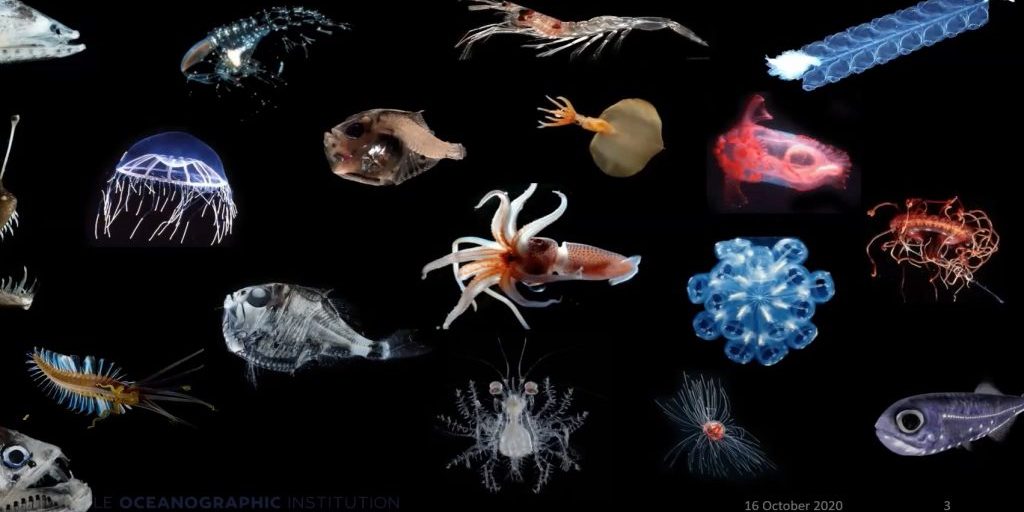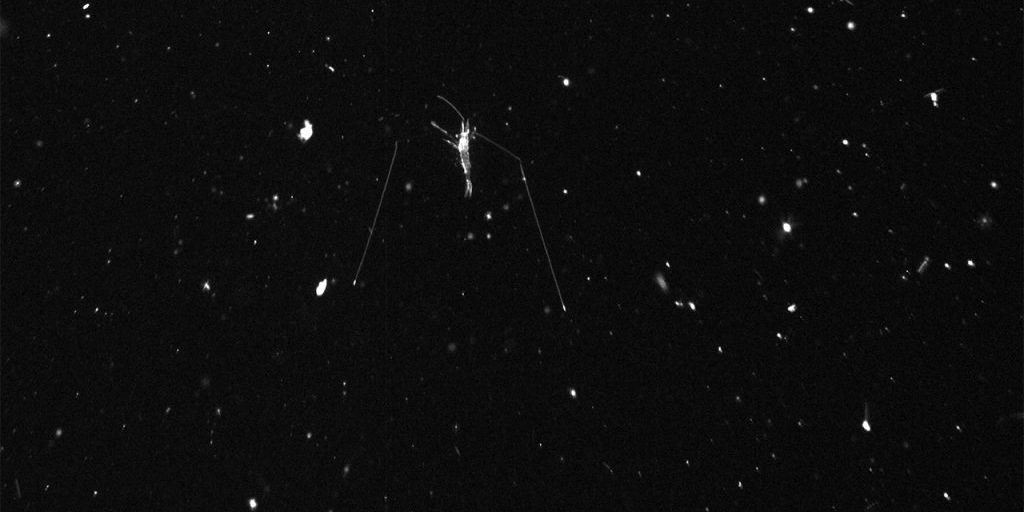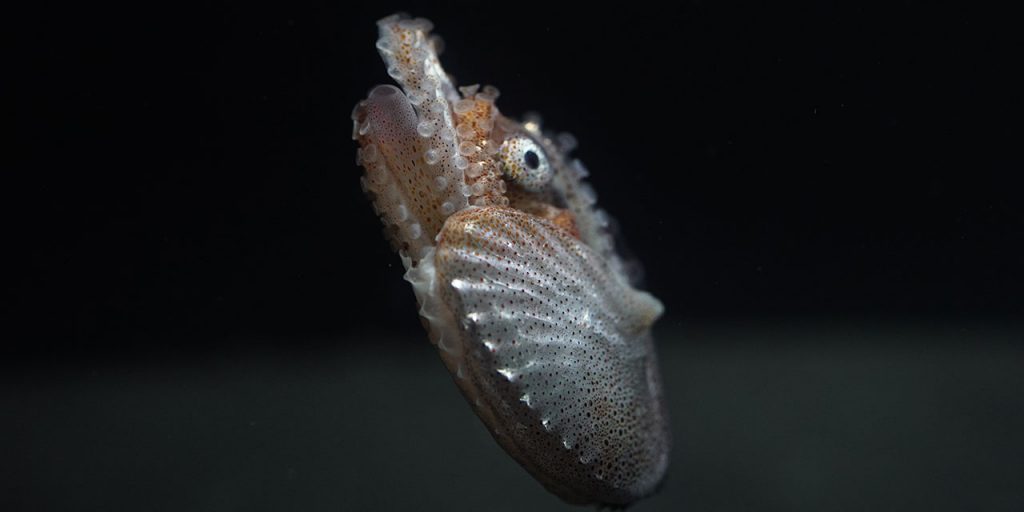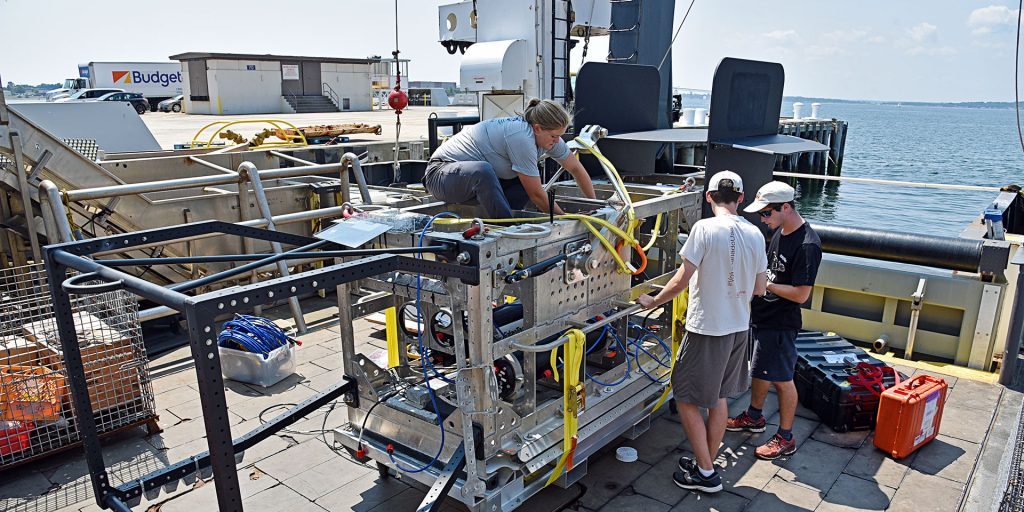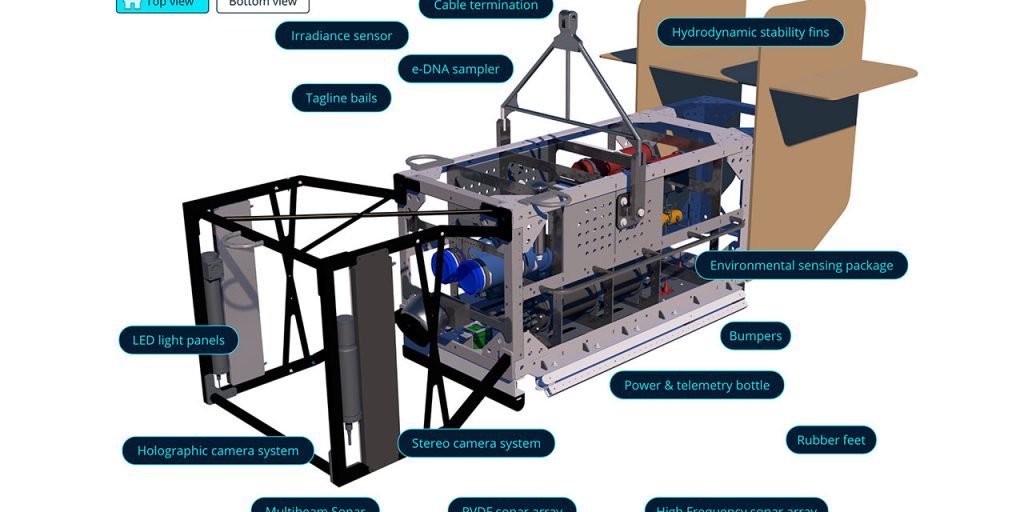The Deep-See is a new, sensor-filled platform for observing animals in the ocean twilight zone. Using this tool, scientists can more accurately estimate their biomass (amount) and biodiversity (species or type). Weighing about 2,500 pounds and extending 16 feet in length, the Deep-See carries a multitude of camera systems, sonars, and sensors for measuring oxygen, currents, and other seawater properties in the twilight zone, as well as a sampling device to collect water for genetic analysis. The vehicle is towed behind a research ship using an electro-optical cable that can transmit data back to scientists on board in real time.
WHOI mechanical engineer Kaitlyn Tradd helped to design and build the vehicle in three sections, or modules: the forward optics module for the cameras and lights, the middle acoustics module for sonars, and the aft module—the tail—for hydrodynamic stability and space to hold additional sensors and equipment.
As novel as the Deep-See is, many of its cutting-edge systems are built on decades of technology development and basic science research by WHOI engineers and scientists.
SPECIFICATIONS
| Dimensions | Length: 4.87 meters (16 feet) Width: 1.2 meters (4 feet) |
| Weight | 1,134 kilograms (2,500 pounds) |
| Energy | Towed, electro-optical cable |
| Depth capability | 1,000 meters |
| Endurance | Varies depending on mission, but usually about 23 hours at 1m/s speed |
| Payload | High-volume eDNA sampler; radiometer; CTD (conductivity, temperature, depth) sensor; holographic camera system, stereo camera system, multibeam sonar, high-frequency sonar, PVDF sonar array. |







